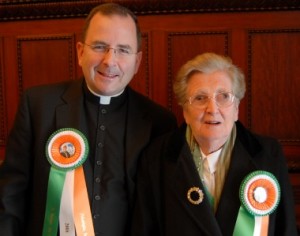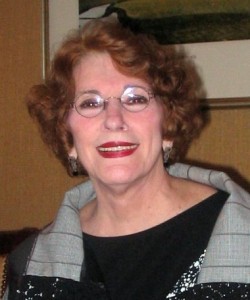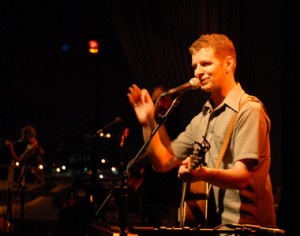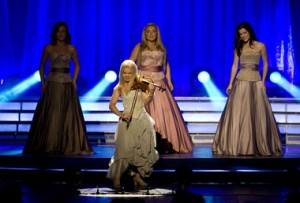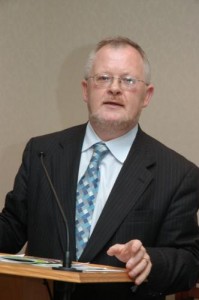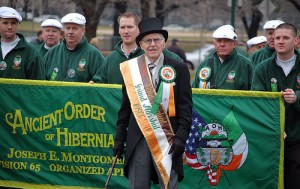By Kathy McGee Burns
“. . .the fruit of the Spirit is love, joy, peace, patience, kindness, faithfulness, gentleness. . .”
—The Apostle Paul to the Galatians
These attributes are the core components of Joseph McLoone, the man and the priest. He is the third child born to Patrick and Bridget and, with his siblings, a living example of the Irish American Dream.
The late Patrick McLoone, a Glenties man, had buried his mother and an Aunt and was left in County Donegal to watch over three maiden sisters. A fourth sister, Mary McGinley, who was living in America, urged him to come to Philadelphia to build a life and so he did. Pat worked for the Acme warehouse, a job held by many Irish immigrants at that time.
Bridget, who came from Ardara, County Donegal, was persuaded by her mother, Mary McHugh, (a woman of great vision for those times) to spread her wings, but not go far. Mary wanted to be able to see her daughter from time to time. She said, “When I am dead, you can go to America.” So off to London she went and 10 years later, after burying her mother, went to Philadelphia, to live with her sister, Sally Montague. She got a job working for a rectory.
The McLoones met at the Emerald Pub. With hard work, foresight, love and dedication, they raised a highly successful family.
Their son, Joe McLoone grew up in Olney, attending Incarnation School and Cardinal Dougherty. While a senior in high dchool, he thought he might have a vocation as a priest. At first, he sought out the advice of the parish’s newly ordained priest, Father Peter Welsh and then went to a retreat at St. Charles Borromeo Seminary in Overbrook. After this, he was sure that this was not for him.
He entered LaSalle College and during that first year wondered if he had given this calling a fair try and decided he had not. In 1984, Joe McLoone, graduated from the Seminary with a BA in Philosophy, then went on to get an M.Div. (1987) and a M.A. in Theology (1988). And to become Father Joseph McLoone, parish priest.
He would humbly tell you that he is just like any other priest, but, actually, he has made a meteoric rise in his career.
Most of his pastoral assignments have been in the City of Philadelphia; St. Anne’s (1988-91), St. Martin of Tours (1992-97), and the Cathedral Basilica of SS.Peter and Paul (1997-2001). On his fourth assignment, he became the youngest pastor of St. Therese of the Child Jesus Parish in Mt. Airy. At that time, he had only been ordained for 13 years. Commitment, persistence, enthusiasm and, as he’ll tell you, help from the Holy Spirit, was the impetus for this success.
He currently serves as pastor of Saint Katharine Drexel in Chester, a church in a diverse—in both race, economics—community. In recent years, Chester has gone from six Catholic schools to one in order to keep Catholic education available and affordable. Now Msgr. McLoone became a founding member of the recently chartered Drexel Neumann Academy. It is run on a four-prong sponsorship which includes the Archdiocese, St. Katharine Drexel, Neumann University and the Sisters of St. Francis.
With all of this on his plate, Father Joe, as he’s known to many, still finds time to live his Irish roots. He is an active part of the Philadelphia Irish community for many years: chaplain of the Donegal Association, caregiver to the Irish immigrant, friend to all the societies and the most important to me, chaplain for 10 years of the Delaware Valley Irish Hall of Fame.
His Ocean City cohort, Father Kevin Gallagher said many lovely things about his friend: “Joe is a hard working pastor who makes time for everyone in his parish. He has influenced many to return to the Catholic faith through his easy nature and pleasant way. He is a doer and a thinker. He has a special place in his heart for the sick and suffering, the downtrodden and neglected. He was very influential in my entering the seminary and has been extremely supportive of priesthood.”
Father Gallagher says that Joe McLoone is a true Irish family man, devoted to his mother, Bridget. And he’s not the only member of his family who helped fulfill the McLoone’s Irish-American dream. Brother Patrick, Jr. is managing editor of the Philadelphia Daily News. Their sister Mary McLoone Hofmann, M.D., F.A.C.P. is founding chief of Geriatric Medicine, at Abington Hospital, and second sister, Kate McLoone Burns is a school nurse at Overbrook public and Catholic schools.
Kathy McGee Burns is president of the Delaware Valley Irish Hall of Fame.

